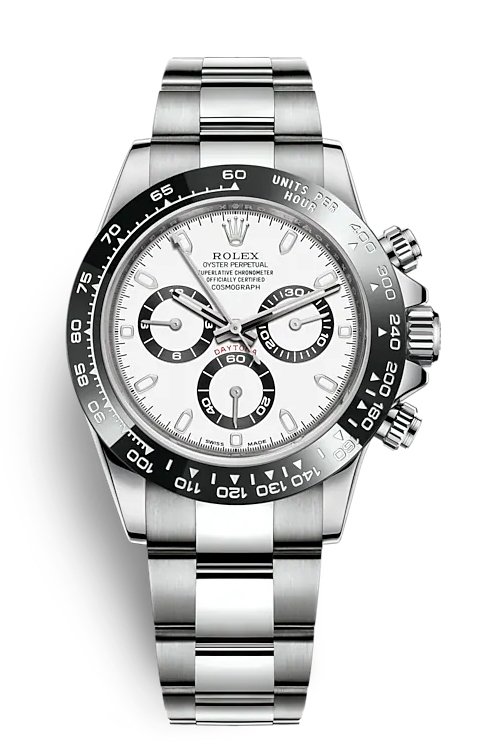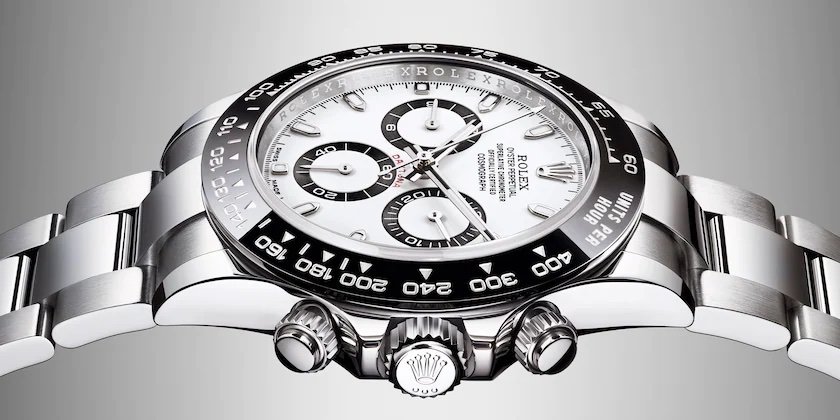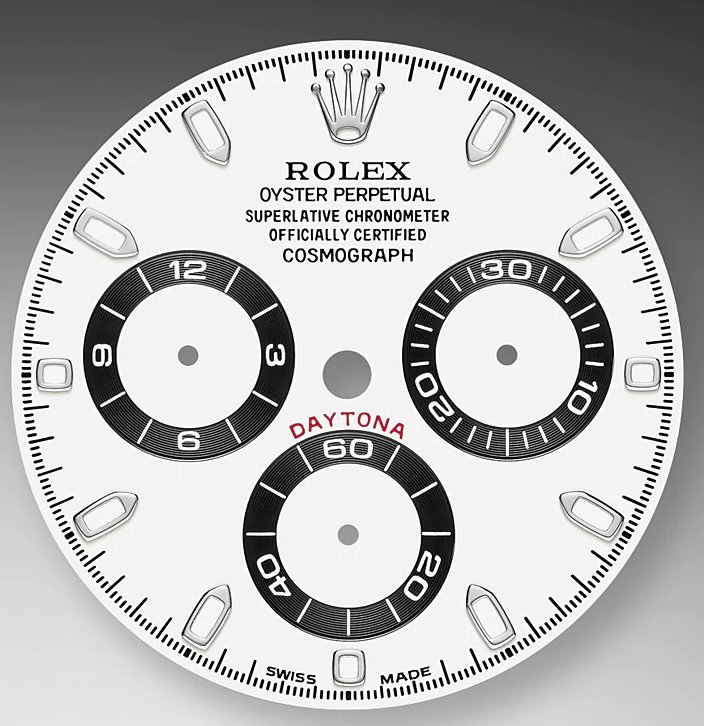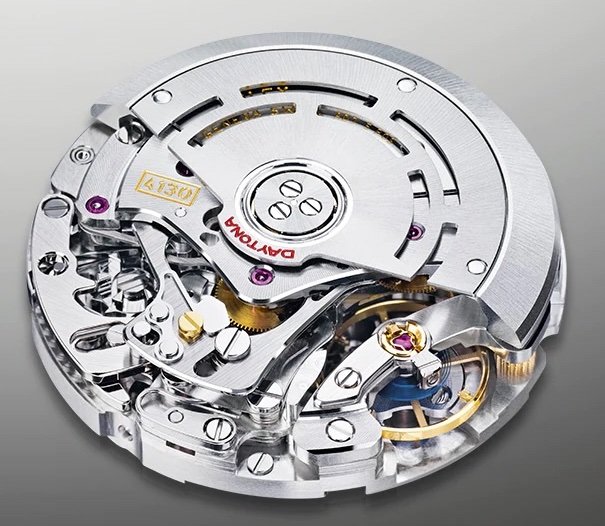Rolex Cosmograph Daytona ref: 116500LN Review

Published: Sep 12, 2021
It’s no surprise that over its 60-year heritage, the Rolex Cosmograph Daytona watch has received several modifications and upgrades to its revered design. The iconic chronograph first launched in 1963 after the first “24 Hours of Daytona” endurance race. Rolex first developed this watch for racing drivers taking part in the race, which takes place on the Daytona International Speedway in Daytona Beach, Florida.
Although special Daytona watches were awarded to the winners of the race (up until recently) with a specially engraved caseback, standard Daytona watches are just as sought-after among Rolex watch collectors, chronograph fans and motorsport enthusiasts. The ref: 116500LN has a staggering waiting time of up to 10 years. Initially priced at around $13,000, those that have never been worn or those in pristine condition now have an asking price of around $30,000. Other highly desirable Daytona watches are the Paul Newman variations with the “exotic dial” – each one of which comes with an interesting back history and a unique story to tell.
About the Rolex Cosmograph Daytona 116500
When it debuted in 2016, the ref; 116500 became an instant success, with waiting lists building immediately for the already popular icon. The Rolex Daytona ref. 116500LN is the stainless steel and ceramic variant. The model belongs to the prestigious brand’s third generation of the Rolex Daytona, which first launched in 2000. One of the most significant updates, of course, is the fact that this generation is powered by Rolex’s very own in-house movement. Other noteworthy differences include the running seconds indicator which moved from the 9 o’clock to the 6 o’clock location. In 2011, these 6-digit references featured bezels crafted from Rolex’s proprietary Cerachrom material, differentiating them from others that had been before them.

The case:
The Rolex Cosmograph Daytona ref: 116500LN features a Cerachrom bezel, taking its name from a combination of words “ceramic” and “chrom” – a Greek word for colour. The patented ceramic alloy, developed independently by Rolex, has been used across the company’s portfolio of contemporary sports watches. Cerachrom is not only highly resilient but its smooth glossy surface also has the ability to enhance the aesthetic of a watch. It is a scratch-resistant material that is also incredibly tough and hard-wearing and - very importantly - is resistant to colour fading. The first Cerachrom bezel showcased in a Rolex watch was the GMT Master II in 2005 before reaching the steel Rolex Daytona in 2016 with the ref: 116500LN. Before this, Ceracrhom bezels did feature in the Daytona line but only in the Everose and platinum variants.
The Rolex Cosmograph Daytona ref; 116500LN watch is 40mm in size and features an Oyster case developed from Oystersteel and a monobloc Cerachrom bezel with a moulded tachymetric scale for measuring distance based on speed or speed based on time travelled. The case is fitted with an Oystersteel bracelet with links executed in a mix of brushed and polished finishes, along with an Oysterlock safety clasp and an Easylink 5mm comfort extension link. This mechanism allows for the bracelet to be extended or shorted by the wearer in 5mm increments without the need for any tools.
A Triplock screw-down crown with three sealed zones ensures the Rolex Cosmograph Daytona ref: 116500LN upholds its water-resistant capability of 100 meters. It also features screw-down push-pieces and is developed from the 904L stainless steel material as opposed to Rolex’s earlier 316L steel.

The dial
One of the most popular features of the Rolex Cosmograph Daytona ref: 116500LN is its classic black or white dial. The white dial version features a Chromalight display, guaranteeing a rich long-lasting blue glow at night on the hands and indexes. The trio of chronograph counters maintains an easy-to-read layout that has been utilized for decades by Daytona aficionados. The 3 o’clock location is where the 30-minute register can be found, while the running seconds sub-dial resides at 6 o’clock and the 12-hour totaliser, at 9 o’clock. The black outlines featured around the chronograph counters echo some vintage Daytona models of the past and suffice to say, the black Cerachrom bezels, although newer than the original acrylic bezels have lost nothing in terms of character and charm.

The movement:
Inside the Rolex Cosmograph Daytona ref; 116500LN is the in-house developed Calibre 4130. As mentioned, this is a remarkably important movement for Rolex, since it marks the third generation of the Rolex Daytona and the first chronograph movement developed by the brand. Despite being equipped with a Parachrom hairspring, the movement features fewer components for better mechanical efficiency and is highly resistant to magnetic fields, water, shocks and temperature fluctuations.
The Calibre 4130 can promise a power reserve of 72 hours once fully wound and has been chronometer-certified to guarantee a level of accuracy passed by one of the industry’s highest standards. By promising an accuracy of +2/-2 seconds per day, this mechanical engine is perfectly adapted to life on the racetrack. To guarantee this level of accuracy and a seamless performance behind the wheel, the Rolex Calibre 4130 needs to withstand vibrations, swerved and bumps on the racetrack, which it does so effortlessly.
If you’d like to explore more details of the Rolex Cosmograph Daytona watch ref: 116500LN, you can visit the link here.

Find out more about Rolex watches in our guides
To find out more about which Rolex hold their value you can read more of our guides where we cover all Rolex Nicknames or our classic guide to the Day Date models and our comparision with their sister brand: Rolex vs Tudor.
Subscribe our newsletter for more news related content and find our quick comparitive guides to help you decide which watch you should buy next: